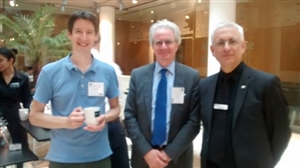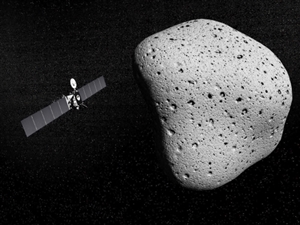 Although meteorological conditions badly disrupted travel in the city on the day of the seminar, a very interested and involved audience travelled across London to hear about the Rosetta mission and its 10-year journey to Comet 67P/Churyumov-Gerasimenko from two very knowledgeable and engaging speakers.
Although meteorological conditions badly disrupted travel in the city on the day of the seminar, a very interested and involved audience travelled across London to hear about the Rosetta mission and its 10-year journey to Comet 67P/Churyumov-Gerasimenko from two very knowledgeable and engaging speakers. First, Dr Paolo Ferri from ESA’s European Space Operations Centre (ESOC) in Germany gave a presentation entitled ‘Rosetta – how to catch a Comet’ in which he described the mission operations challenges, with particular emphasis on the difficulties of orbiting the comet nucleus.
Secondly, Dr Mark Bentley from the Space Research Institute of the Austrian Academy of

Sciences gave a presentation on ‘A snapshot of the science from Rosetta’ which contained an overview of the science findings from the man instruments on the Rosetta spacecraft itself and on the Philae lander.
After the presentations, a lively question and answer session followed. The audience clearly would have enjoyed both longer presentations and more discussion time afterwards - always the sign of a good evening!
Ten interesting facts about the mission:
- First meeting to discuss the mission was in 1983
- Spacecraft travelled on a ten year journey for 7 billion km
- Launch window was 21 days long.
- 2 asteroid fly-bys to test instruments
- 4 gravity assists to catch up with the comet
- Lander could not be steered on Comet 67P, so was just ‘dropped'.
- 7hr fall from release to landing site
- Comet is able to reflect only 6% of light
- 4 different types of grains were detected on the comet nucleus
- No magnetic field on the comet nucleus
At the end of September, the mission will come to an end, with the spacecraft undertaking 1km flyovers of the comet’s surface.